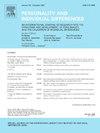Multiple dimensions of workplace curiosity: Evidence of generalizability in nine countries
IF 3.5
2区 心理学
Q1 PSYCHOLOGY, SOCIAL
引用次数: 0
Abstract
Curiosity is a fundamental human motive that is gaining increasing attention by researchers and practitioners interested in workplace functioning. Recent research suggests rather than designating someone as curious or not, there is benefit in detailing frequency/intensity scores on multiple dimensions. In this multi-national study, we examined how four workplace curiosity dimensions (Joyous Exploration, Deprivation Sensitivity, Stress Tolerance, and Openness to People's Ideas) operate with employees (adults aged 19 to over 55) working in nine countries. Our results include nine (from 23) countries with sufficient sample sizes (N > 250) to estimate stable correlations (Perugini, Gallucci, & Costantini, 2014): Germany, USA, China, France, India, Italy, Taiwan, Brazil, and Mexico. In an attempt to improve the psychometrics and minimize respondent burden, we found support for removing a single item per subscale. We also found evidence that the four-factor structure of curiosity showed generalizability across different geographical locations, age ranges, and biological sex. We detail the comparative psychometrics of this new, briefer version of the M-Workplace Curiosity Scale. Our approach offers a template for cross-cultural measurement approaches — giving adequate focus to measurement invariance as a method of assessing generalizability. Scientists cannot assume generalizability; it must be tested to understand whether, how, and when psychological strengths such as curiosity operate.
求助全文
约1分钟内获得全文
求助全文
来源期刊

Personality and Individual Differences
PSYCHOLOGY, SOCIAL-
CiteScore
8.50
自引率
4.70%
发文量
577
审稿时长
41 days
期刊介绍:
Personality and Individual Differences is devoted to the publication of articles (experimental, theoretical, review) which aim to integrate as far as possible the major factors of personality with empirical paradigms from experimental, physiological, animal, clinical, educational, criminological or industrial psychology or to seek an explanation for the causes and major determinants of individual differences in concepts derived from these disciplines. The editors are concerned with both genetic and environmental causes, and they are particularly interested in possible interaction effects.
 求助内容:
求助内容: 应助结果提醒方式:
应助结果提醒方式:


